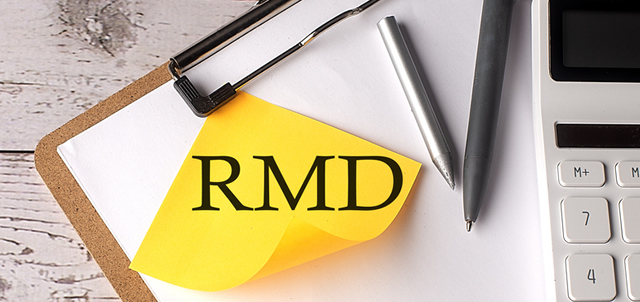If you’re approaching retirement or already there, you’ve likely heard the term RMD — Required Minimum Distribution. But what exactly is an RMD? Why does it matter so much? And how can planning ahead help you avoid costly mistakes? Let’s break it down:
What Are RMDs?
A Required Minimum Distribution is the minimum amount the IRS requires you to withdraw annually from certain retirement accounts once you reach a specific age. This includes:
- Traditional IRAs
- 401(k)s
- 403(b)s
- Other employer-sponsored retirement plans
Roth IRAs (while you’re alive) are exempt — one of many reasons Roth accounts are popular in retirement planning.
Why Do RMDs Exist?
The government gave you a tax break when you contributed to your retirement accounts — in many cases, deferring income taxes for decades. RMDs are the government’s way of finally collecting their share.
You can’t keep money growing tax-deferred forever. Uncle Sam wants his cut.
When Do RMDs Start?
As of 2025, RMDs start at age 73 (and will increase to 75 for those born in 1960 or later). That means by April 1st of the year after you turn 73, you must take your first RMD. After that, withdrawals must be taken by December 31st each year.
Important: If you delay your first RMD until April 1st of the following year, you’ll have to take two RMDs that year — one for your age 73 year and one for your age 74 year — which can create a large taxable event.
How Are RMDs Calculated?
Your RMD is based on two things:
- Your account balance as of December 31st of the previous year.
- Your life expectancy, according to IRS tables.
The basic formula:
RMD = Account Balance ÷ Life Expectancy Factor
For example, if you have $500,000 in a retirement account and your life expectancy factor is 26.5, your RMD would be about $18,867.92.
Why RMDs Matter for Your Taxes
RMDs count as taxable income, and that can push you into a higher tax bracket — especially when combined with:
- Social Security benefits
- Pensions
- Investment income
Worse yet, RMDs can cause more of your Social Security to be taxed. That’s right — the more income you show, the more your Social Security benefits become taxable (up to 85%).
What Happens If You Miss an RMD?
Missing an RMD can be expensive. The penalty is 25% of the amount you should have withdrawn. For example, if your RMD was $20,000 and you forgot to take it, you could owe the IRS $5,000 in penalties — plus the tax on the $20,000.
RMD Planning Tips: Don’t Wait Until 73
Here’s the big idea: waiting could cost you.
If you wait until age 73 to start planning for RMDs, you could face:
- Tax surprises
- Social Security benefit taxation
- Higher Medicare premiums (IRMAA penalties)
- Two RMDs in one year if you delay the first one
Instead, consider:
- Roth conversions before RMD age
- Strategic withdrawals to spread taxable income over multiple years
- Qualified charitable distributions (QCDs) if you’re charitably inclined
These strategies can help minimize taxes, protect Social Security income, and preserve your wealth longer.
Bottom Line: RMDs Are a Tax Time Bomb — Defuse It Early
RMDs aren’t just a rule — they’re a trigger point that can affect your whole retirement income plan. The sooner you understand how they work and how to plan around them, the better off you’ll be.
At Strategies for Wealth Management, we specialize in helping pre-retirees and retirees create RMD-smart income plans that reduce taxes and create peace of mind.

